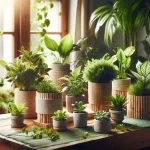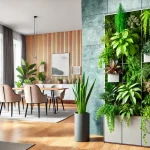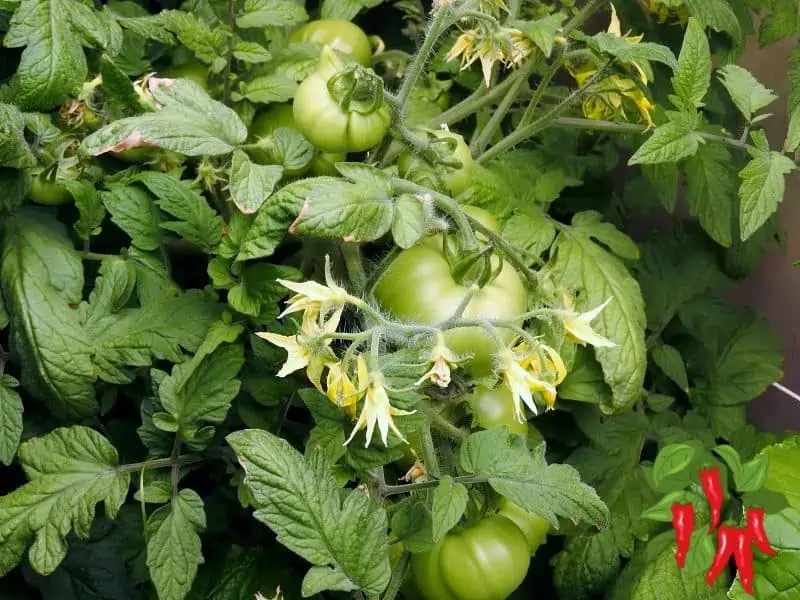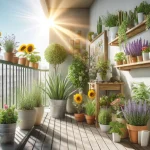This post may contain affiliate links. If you buy something from one of our links we may earn a commission. Thanks
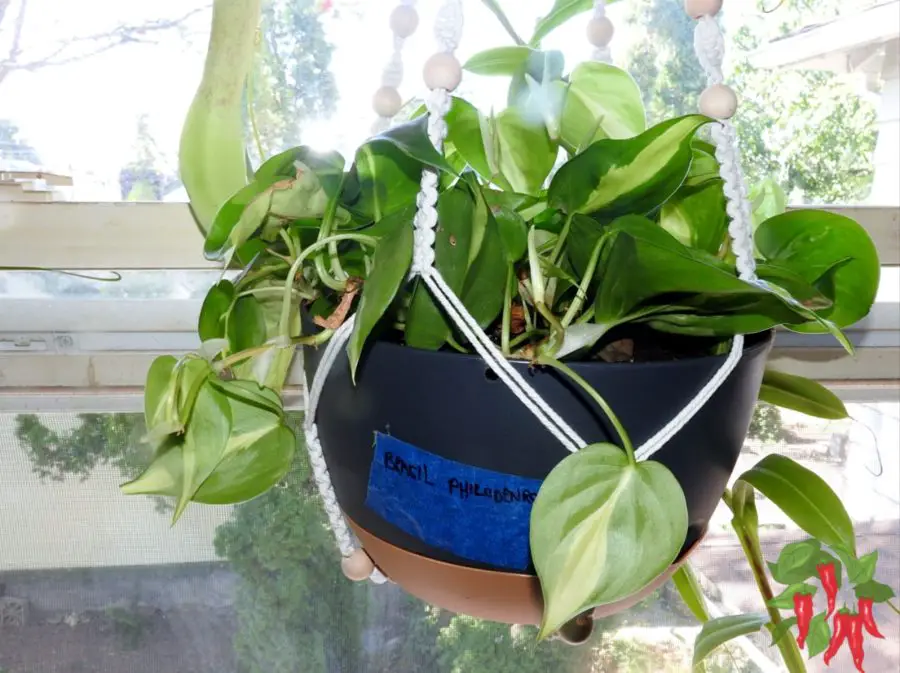
Variegated Heartleaf Philodendron care isn’t rocket science, but it can be tricky if you don’t know what you’re doing.
Have you ever brought home one of these cute plants, only to watch it wilt or yellow within weeks?
Don’t worry – I’ve been there too, but I’ve learned some simple tricks that’ll keep your philodendron thriving.
Variegated Heartleaf Philodendron Care
Key Takeaways
- Variegated Heartleaf Philodendron care is straightforward with the right know-how.
- These plants thrive in bright, indirect light and prefer soil that’s allowed to dry between waterings.
- They enjoy humid environments and occasional fertilizing during the growing season.
- With proper care, heartleaf philodendrons can be long-lived, easy-to-grow houseplants.
Variegated Heartleaf Philodendron Care
 Brasil Philodenron Heartleaf Hanging Plant, Live Indoor Plant, Easy Care
Brasil Philodenron Heartleaf Hanging Plant, Live Indoor Plant, Easy Care
Hey there, plant lovers! Today, we’re talking about the variegated heartleaf philodendron.
I’m excited to share what I’ve learned about keeping it happy and healthy.
Whether you’re a seasoned plant parent or just starting out, this guide will help you give your heartleaf philodendron the TLC it needs.
So when I received my Variegated Heartleaf Philodendron it was in a small 6-inch hanging basket and it was sold as Philodendon brasil.
I knew it would quickly outgrow its pot so I immediately repotted it in a 10-inch self-watering planter.
I use coco coir for all my indoor plants when I repot them. It wicks water better than peat in self-watering planters and has a neutral pH.
 Hanging Planter Self Watering 10 Inch, 2 Pack Indoor Outdoor Hanging Baskets
Hanging Planter Self Watering 10 Inch, 2 Pack Indoor Outdoor Hanging Baskets
One good thing about hanging self watering planters is they make watering easier and they don’t drip inside your home. This particular planter comes with an attractive macrame hanger and a metal chain too.
Getting to Know Your Variegated Heartleaf Philodendron
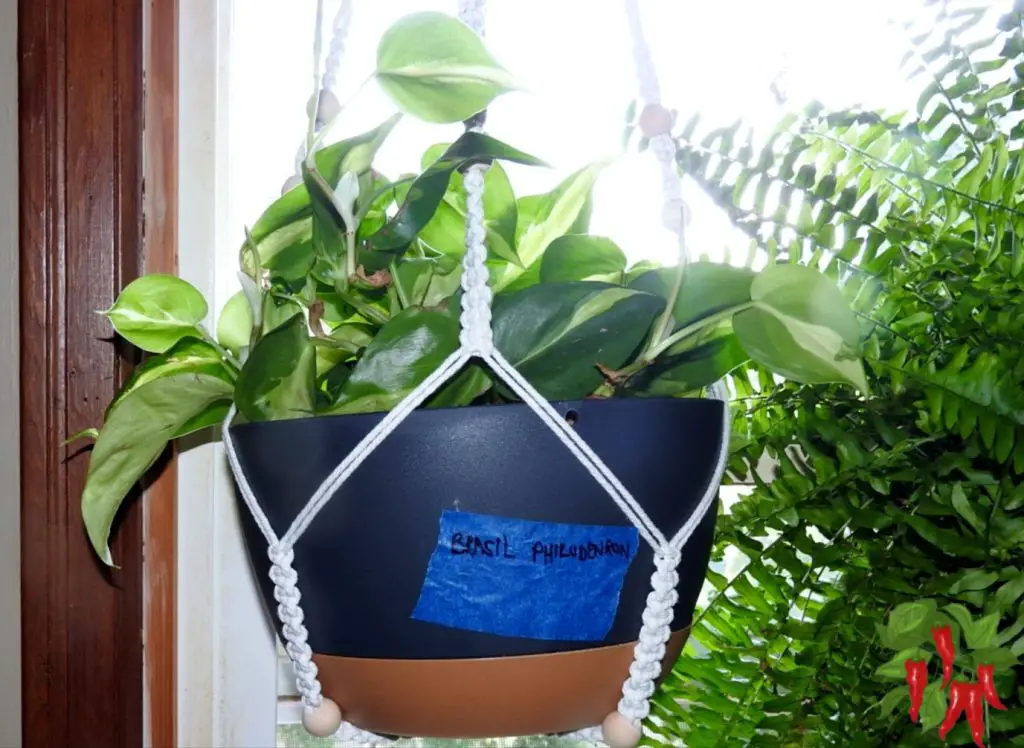
The heartleaf philodendron (Philodendron hederaceum) is a popular houseplant known for its heart-shaped leaves and trailing vines.
The Heartleaf Philodendron is scientifically known as Philodendron hederaceum and Philodendron Brasil is a specific cultivar of Philodendron hederaceum, known for its striking variegated leaves.
Native to tropical regions of the Americas, this easy-to-grow plant adapts well to indoor environments.
Some varieties exhibit variegated leaf growth, where the leaves display patterns of different colors, typically combining shades of green with white, yellow, or cream.
These variegated forms are often prized for their decorative appeal, adding visual interest to the classic philodendron shape.
Heartleaf philodendrons are easygoing plants that can brighten up any room. They’ve got these cute heart-shaped leaves (hence the name) and can grow pretty fast if you treat them right.
Light: Finding the Sweet Spot
These plants are pretty chill when it comes to light, but they do have some preferences. Mine sits near a north-facing window and seems to love it there. Here’s what you need to know:
- Bright, indirect light is best
- They can handle some shade, but too little light will make them leggy
- Direct sun can burn the leaves, so keep them out of harsh afternoon rays
If your plant’s leaves are getting pale or the stems are stretching out, it might need more light. On the flip side, if you see brown spots, it could be getting too much sun. Just move it around until you find that sweet spot.
Water: Don’t Overdo It
Watering can be tricky, but once you get the hang of it, it’s easy. Here’s my routine:
- Water when the top inch of soil feels dry
- Give it a good soak, but make sure the pot drains well
- In winter, you might need to water less often
I learned the hard way that overwatering is a quick way to kill these plants. If you’re not sure, it’s better to underwater than overwater.
Yellow leaves are often a sign of too much water, while droopy leaves usually mean it’s thirsty.
If you use self watering planters all you have to do is keep the reservoir full and your plant will get the right amount of water through wicking action.
Soil and Potting: Keep It Loose
Heartleaf philodendrons aren’t picky about soil, but they do like it well-draining. I mix coco coir with some perlite to keep things airy.
As for pots, they’re pretty happy in smaller containers. I’ve found that they actually seem to grow better when they’re a bit root-bound.
When it comes to repotting, I usually do it every couple of years or when I see roots coming out of the drainage holes. Just size up by an inch or two – nothing too drastic!
Humidity: A Little Extra Moisture
These plants are tropical, so they love humidity. In my dry apartment, I’ve had to get creative:
- Grouping plants together can create a mini humid zone
- Pebble trays filled with water under the pot can help
- You can mist the leaves, but don’t overdo it
I’ve found that misting every few days keeps my philodendron looking perky. Just be careful not to let water sit on the leaves for too long, as this can lead to fungal issues.
Fertilizer: A Little Boost Goes a Long Way
During the growing season (spring and summer), I give my philodendron a little fertilizer every month.
Any balanced, water-soluble houseplant food will do. Just remember to dilute it to half-strength as these plants don’t need much to thrive.
Pruning and Maintenance: Keeping It Tidy
Pruning isn’t just about looks – it helps your plant grow fuller. I trim mine back every spring:
- Cut just above a leaf node (where the leaf meets the stem)
- Use clean, sharp scissors to avoid damaging the plant
- You can root the cuttings in water to make new plants!
Cleaning the leaves with a damp cloth every now and then helps them photosynthesize better and keeps pests at bay.
Common Problems: Troubleshooting
Even with the best care, problems can pop up. Here are some I’ve dealt with:
- Yellow leaves: Usually overwatering or too much direct sun
- Brown leaf tips: Low humidity or using water with too many chemicals
- Leggy growth: Not enough light
- Pests: Keep an eye out for mealybugs or spider mites
Most issues can be solved by adjusting your care routine. Don’t be afraid to experiment a little to find what works best in your space.
Variegated Heartleaf Philodendron Care FAQs
The Variegated Heartleaf Philodendron is a popular houseplant prized for its heart-shaped leaves featuring unique splashes of cream, white, or yellow.
This attractive vine adds a touch of elegance to any indoor space while being relatively easy to care for.
However, like all plants, it has specific needs to thrive. This FAQ guide addresses common questions about caring for your Variegated Heartleaf Philodendron, helping you keep your plant healthy and vibrant.
How much sun does a Heartleaf Philodendron need?
They prefer bright, indirect light but can tolerate some shade. Avoid direct sunlight, which can burn the leaves.
How often should you water Heartleaf Philodendron?
Water when the top inch of soil feels dry. This could be once a week or less, depending on your home’s conditions.
Should you mist a Heartleaf Philodendron?
Misting can help increase humidity, which these plants like. Just don’t overdo it, and make sure the leaves don’t stay wet for too long.
How do you care for a Heartleaf Philodendron indoors?
Give it bright, indirect light, water when the soil is dry, provide some humidity, and fertilize lightly during the growing season.
How do you make a philodendron happy?
Mimic its natural tropical environment: warm temps, decent humidity, and well-draining soil. Regular pruning can also encourage fuller growth.
What does a healthy Heartleaf Philodendron look like?
It should have vibrant green, heart-shaped leaves and sturdy stems. New growth is a good sign of a happy plant.
What is the disadvantage of philodendron?
The main drawback is that they’re toxic if eaten, so keep them away from pets and kids. They can also get leggy if they don’t get enough light.
Do philodendrons like small pots?
They actually do pretty well in smaller pots and can even grow better when slightly root-bound. Just don’t let them get too cramped.
Is a Heartleaf Philodendron a climber or hanging plant?
It can be both! In nature, they climb trees, but in homes, they’re often grown as trailing plants in hanging baskets or on shelves.
Variegated Heartleaf Philodendron Care Conclusion
Wrapping It Up
Well, there you have it – everything I’ve learned about growing heartleaf philodendrons over the years.
Remember, every plant and every home is different, so don’t be afraid to adjust these tips to fit your situation.
The most important thing is to pay attention to your plant and enjoy watching it grow and I hope this guide helps you enjoy them as much as I do.. Happy gardening, everyone!
Key Takeaways
Here’s a quick recap of the most important points:
- Give your plant bright, indirect light
- Water when the top inch of soil is dry
- Provide some humidity, but don’t overdo it
- Fertilize lightly during the growing season
- Prune occasionally to encourage fuller growth
Final Thoughts
Remember, every plant is unique, just like every home. Don’t be afraid to adjust these tips to fit your situation.
The most important thing is to pay attention to your plant and enjoy watching it grow.
Happy Growing!
If you’ve found this guide helpful, why not check out some of my other plant care articles?
I’ve got tips on everything from succulents to tropical beauties. And if you have any questions, feel free to drop them in the comments. I’m always happy to chat about plants!
Read more: Indoor Apartment Gardening: 15 Point Comprehensive Guide
Visit my Amazon Influencer Page for videos and gardening products Grow Your Own Garden


